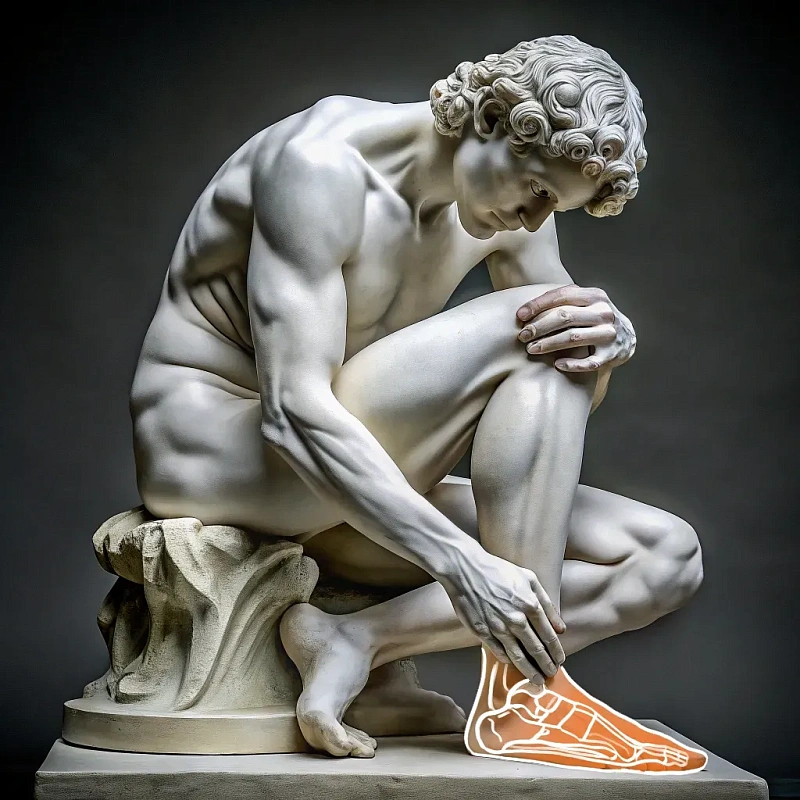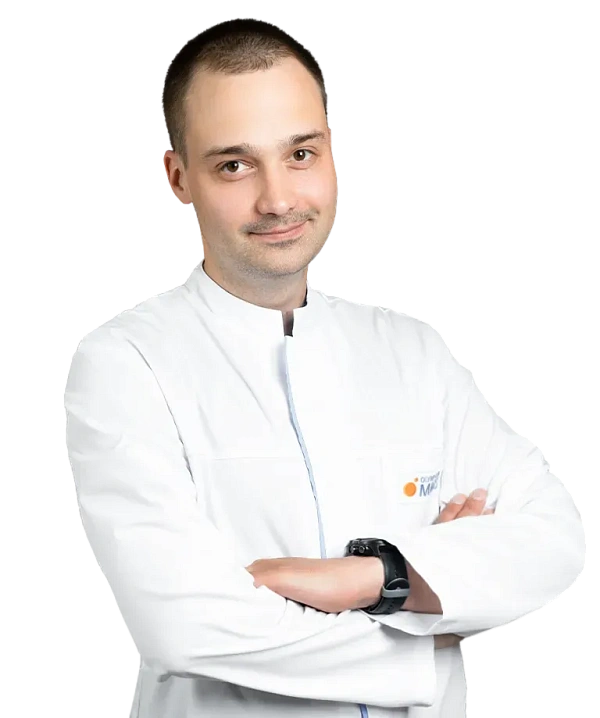Treatment of fractures of the foot bones
Foot bone fracture is an injury that can involve one or more of the 26 bones that make up the foot. Precise anatomy restoration of the foot allows for the most complete recovery of the stato-dynamic function of the foot.

Foot plays a key role in supporting body weight, impact absorption, and mobility. Foot bone fractures are often caused by falls, car accidents, sports injuries, or osteoporosis. Symptoms include severe pain, swelling, deformity and limited mobility.
Complex or displaced fractures may require surgical intervention - osteosynthesis, which allows precise fixation of bone fragments with steel components. Osteosynthesis is performed using minimally invasive techniques, which reduces trauma and accelerates the recovery process. Most patients can begin rehabilitation the first few days after surgery under the supervision of a specialist.
Common blood and urine tests. Coagulogram (blood clotting assessment). X-ray or computed tomography (CT) scan of the foot. Consultation with an anesthesiologist to choose the best anesthesia option. Examination and consultation with a general practitioner for an overall assessment of the patient's health.
Non-displaced fractures are usually treated nonsurgically, which includes immobilizing the foot with a cast or orthopedic shoes to ensure proper bone fusion. Surgery is required for displaced, complex fractures or in cases of threat to adjacent tissues. Surgery usually includes open reduction and internal fixation of the bone fragments with steel plates, screws and pins to secure the bone.
X-ray equipment for intraoperative monitoring. Steel retainer set (plates, screws, pins) to secure bone fragments.
Rehabilitation starts after the treatment, to restore mobility, strength and foot function. Rehabilitation may include physiotherapy, exercise therapy and foot workout to restore range of motion and muscle strength. Patients are also recommended to wear prescribed orthopedic shoes. The duration and intensity of rehabilitation depend on the complexity of the fracture and the patient's individual characteristics.
Benefits
Anatomy restoration
Securing and fusion of bone fragments ensure restoring normal foot structure.
Pain relief and mobility restoration
Treatment helps patients return to normal walking and standing without pain.
Preventing complications
Early treatment helps prevent chronic pain, foot deformity and trouble walking.
Frequently Asked Questions
How can I determine foot bone fracture?
When is surgery required for a foot bone fracture?
How long does rehabilitation take after a foot bone fracture?
Will I be able to walk right after the surgery?
Didn't find an answer to your question?
You can describe your problem in detail and ask a question to the doctor. He will answer you and help you find a solution
Врачи
Смотреть всех врачейCandidate of Medical Sciences. Orthopedic Trauma Surgeon. Head of the Traumatology Department.
Similar referral activities
Arthroscopy of the ankle joint
Ankle arthroscopy is a minimally invasive surgical procedure used to diagnose and treat various diseases and injuries of the ankle joint.
Arthroscopy of the knee joint
Knee arthroscopy is a minimally invasive surgical procedure for the diagnosis and treatment of injuries and diseases of the knee joint. It allows examining the joint for damage and eliminating the identified defects.
Arthroscopy of the elbow joint
Arthroscopy of the elbow joint is a minimally invasive surgical intervention that allows for accurate diagnosis and simultaneous treatment of joint injuries.
Arthrodesis of the joints of the fingers of the hand
The destruction of the joints of the fingers of the hand is accompanied by pronounced pain and impaired functions. Arthrodesis is a surgical intervention in which the affected joint is completely immobilized, which relieves pain and progression of inflammation.
Arthroscopic revision of the cystic joint
The condition of the wrist joints determines the functioning of the hand. Arthroscopic revision is a minimally invasive diagnostic procedure that assesses the condition of the joint tissues, which is necessary for planning subsequent treatment.
Arthroscopy of the shoulder joint
Arthroscopy of the shoulder joint is a minimally invasive surgical procedure designed to diagnose and treat various diseases and injuries of the shoulder joint.
